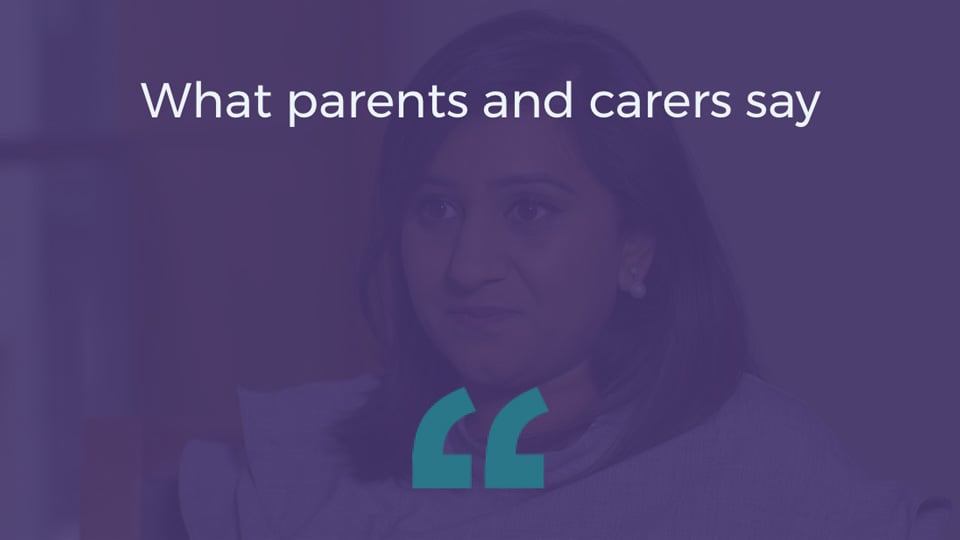Newsletter Sign Up
Regular work+family updates for
HR and diversity professionals.
My Family Care asks Sarah: With the introduction of Shared Parental Leave, there is much debate about whether men will in fact take up the offering or whether it will make a difference to women in the workplace. What effect do you think the change will have? In an ideal world, what needs to happen to change the face of parental leave?
Will SPL be a definitive solution?
Opinion seems sharply divided about the prospects of success for Shared Parental Leave (SPL).
On the one hand, Business Secretary Vince Cable expresses his deep satisfaction at "having extended the right to request flexible working and introduced shared parental leave. I am convinced that these [will] help talented people manage complicated lives, and improve the quality of the workplace", and on the other Adrienne Burgess of the Fatherhood Institute expects it to be a "damp squib" with "no impact on uptake by fathers and therefore ... no impact on women in the workplace".
In my view, neither Tigger nor Eeyore is likely to be right.
Let's start with what SPL is not
Shared Parental Leave is not an independent, use-it-or-lose-it right for the father to have time off with his newborn child, and it is not paid at wage-replacement levels.
All the international evidence shows that this is what is needed, if we are serious about the social and family benefits which result from all parents at every income level being able to share care at home, and about the business benefits which follow when domestic equality and equality at work begin to reinforce each other. Such properly paid, independent rights for fathers are what Working Families will continue to campaign for.
And a little about what it is...
What SPL is, however, is an opportunity for a new generation of parents and for their employers. It goes with the grain of Gen Y's family life, values and expectations, and offers employers a way into an early conversation with their working fathers. The beauty of it is that it enables the parents to take leave simultaneously. This makes such sense to younger men and women, even before they become parents, and is likely to mean that SPL will have greater take up than Additional Paternal Leave (APL).
Take up of APL is shamefully low, although it has doubled in its second year. True, twice times not a lot is still not a lot. (Steve Bell's penguins used to put that more earthily, Guardian readers may recall). But perhaps we are allowing ourselves to hope for too little.
I am struck by two things, both of which suggest that SPL could be the beginning of a quiet revolution for fathers, mothers and employers.
The first is that young fathers are not happy at work
Our annual survey of working parents shows that the employees who are least satisfied with their work/life balance, and who are most likely to blame their employer, are fathers aged 26-35.
Talk to young men and women in their teens and twenties and you will find an expectation of equality at home and at work. This is a generation which expects that men and women both have the right to be engaged and present parents. It is also a generation in which the man will not necessarily be the main earner - BIS suggests that in almost half of couples he or she earn the same or she earns more. Choices about who stays home with baby may be different, when mother's is not the second wage.
SPL gives these parents the chance to start their family life together, simultaneously on leave.
The second is the experience of Citi
Citi have, for the past three years, won the Working Families Best for Fatherhood Award. Consistent engagement and communication with fathers has built a culture in which they can be confident and assertive. Citi reports that they had seven APL-ers last year, up from three in 2012. Small straws in the wind perhaps, but Citi does not expect this trend to reverse, and why should it? Every organisation should do its best to communicate to male staff before they become expectant fathers - SPL is coming and it is their right and the organisation's pleasure that they take it up.
Low income families
It is true that it will be difficult for parents on low incomes to take advantage of Shared Parental Leave. Statutory pay is so low that it is a significant disincentive to taking time off just when family costs shoot up. But let's not throw the culture change baby out with the bathwater of what SPL is not.
This is an opportunity
The choices made from next year by some young couples will contribute to gradually changing expectations on the part of a generation of new parents.
And meantime, employers can create the communications and build the culture in which men feel that they can and should share the care for their new child; and in which those Gen Y fathers are more likely to remain engaged and productive at work.
Sarah Jackson, Chief Executive, Working Families












